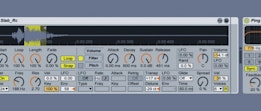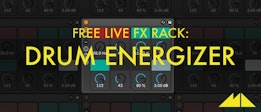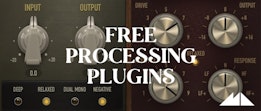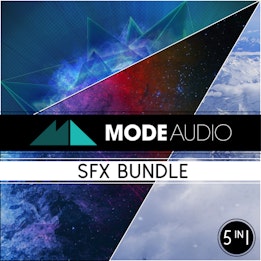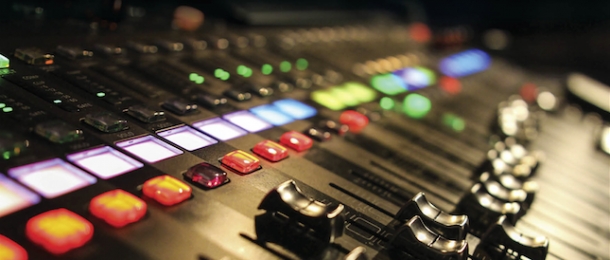
Here at ModeAudio, we're massive, devoted fans of the cinema - from foreign films and art-house TV right through to the biggest of Hollywood blockbusters. Aside from all the captivating special FX, stunning sets and mesmerising acting, one of our very favourite aspects of cinema is the humble soundtrack. From the subtle and eery sound design of Horror and Sci-Fi films right through to the monumental and sweeping scores of Action and Drama movies, nothing gets our hearts racing quite like a good soundtrack. It's why we've spent a good deal of time crafting cinematic ambiances and drones for our releases, as well as how we found ourselves chatting to experienced Hollywood composer and sound designer Jeremy Borum.
Jeremy's insights into the industry are nothing of short of fascinating, particularly if you're an aspiring soundtrack composer looking for practical advice on how to turn your dream into a reality. We were delighted to have the opportunity to put some questions to Jeremy, exploring the current scoring landscape to the use of samples in soundtracking and beyond - we learned a great deal from his answers and hope you will to. Enjoy the full Q & A exchange below!
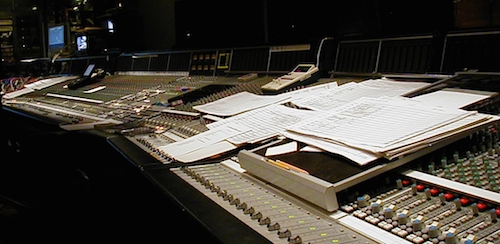
ModeAudio (MA): What is your background in film & TV scoring' Which projects have you worked on and in what capacity'
Jeremy Borum (JB): I have been creating music for media professionally and full time for about 15 years. Every collaboration is different, but I spend the majority of my time either composing, orchestrating, or preparing sheet music. My film orchestration credits include The Need For Speed, The Day The Earth Stood Still, American Gangster, and Body of Lies. As a composer I've scored advertisements for companies like Pedigree and Blue Shield of California, and scored video games for Sony (Smurfs 2) and New York Life. I also wrote a book called Guerrilla Film Scoring, which is an insider's guide to creating a great score both quickly and cost effectively.
MA: Can you tell us a little about the current scoring landscape, where we predominantly have projects involving live & virtual instruments as well as the use of samples'
JB: This is a very exciting time to be writing music. In the last decade there has been a windfall of acceptance for all types of sounds, and great progress in virtual instruments too. There is no longer any kind hierarchy of sounds sources that define some as more legitimate than others, and all of them can be mixed freely across genres. There is very little music for media today that does not incorporate virtual instruments, even at the highest budget levels. The days in which samples and synths were 2nd class citizens to acoustic instruments are long gone. All sound sources are equally legitimate today, and they are all accepted by consumers readily.
The natural result is that samples are used constantly to save money, and they must be used if the composer hopes to make a profit. It's possible to make great sounding music very cheaply, which is a big advantage over composers of decades past. On the other hand there are a limited number of sample libraries, and composers all over the world are using them. The risk of sounding like other composers is far greater than before as a result.
The majority of composers spend the majority of their time working mostly alone. It is an overwhelmingly independent process, even at the highest budget levels. For example, a typical composer on a TV show hires just one or two live players per episode. The rest is either performed by the composer or done virtually. Virtual instruments are an essential part of Guerrilla Film Scoring, and without mastery of them most composers won't get very far in the industry today.

MA: How are these elements balanced in a typical modern score'
JB: The best use of synths and virtual instruments is for non-acoustic sounds. A synth will always do a better job of sounding like a synth than it will trying to sound like a violin, and likewise a person who has spent their life playing the violin will always be better than the best sample libraries. Unfortunately budgets don't typically allow this idealized philosophy to survive.
Different genres of music have different expectations and conventions when it comes to the use of sampled acoustic instruments. In video games and TV the sound of samples is idiomatic and sometimes preferred. In a film score samples are typically used not for stylistic reasons but for budgetary ones, and the intent is usually to conceal them and make the samples sound like live players. On an album project the choice to imitate a live recording or use samples for what they are will depend on the artist's sound and preference.
It is extremely common to layer live instruments on top of sampled ones to sweeten them and make them more believable. A handful of players can make a MIDI orchestra sound substantially better. Foreground and featured instruments get the highest priority, middle instruments next, and background and bass instruments last. Our ears favor higher frequencies, so adding a few violins will usually help a string sound more than adding basses will.
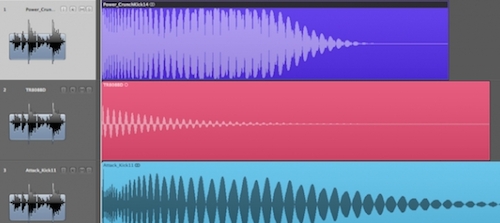
One common way that sampled acoustic instruments are used is to improve the rhythmic precision of live performances. MIDI can be perfectly quantized and samples have very clean attacks, so in instances where speed and precision of rhythm are needed samples are often a great help.
In the case of scores that are all samples, it's very common to use many different sample libraries. To continue with the violin example, each library will have different sounds, strengths, and weaknesses. One violin will be bright, one dark, one roomy, one dry, one will have a fast attack, one slow, etc. Many composers use several libraries so that they can choose the best elements of each in the mix process. This approach has the additional benefit that the resulting sound will not sound like any one particular library.
MA: How have you used samples & instruments in your previous projects'
JB: In short, every way I can imagine.
If there is a parameter that can be controlled it MUST be controlled. Composers need practice too, and deep control of all aspects of virtual instruments is the equivalent of a live player's instrumental technique. If you are using presets or leaving controllers untouched then you are playing the instrument like a child, not like a master.
It's very important that composers learn and practice their virtual instruments. Knowing what is possible is not enough. They should construct specific exercises that focus on and exploit the different features and parameters of their Vis, and then practice using them in different ways. If they do this with a mindset of serious study and insatiable curiosity they will get far more out of their tools, and their music will be far more successful as a result.

MA: Can you share an interesting and unusual sound design tip or technique that those making electronic dance music might be able to use in some way'
JB: Producers need to remember that their physical studio space is a mixing tool that colors all of their mixes.
I think bass management is what sets a great mix apart from an average one. It's the hardest thing to do well for three main reasons: Bass frequencies are less distinct from each other than high frequencies, most monitors are bass deficient and have frequency responses that are far from flat in the bass, and most studios have problems with bass response in the room.
The latter is the easiest and cheapest to fix. Anybody who is serious about mixing music needs to treat their room's bass response, and particularly those who focus on bass-heavy music. Bass traps and other heavy acoustic treatments will cost a fraction of what an upgraded set of studio monitors costs, and the improvement in the mixes will be just as tangible.
The very best mix technique is to take the physical design and sonic properties of your listening space very seriously. Every resonant frequency will influence the way you mix, so your room will color every track you put out even if you don't use any live instruments. Once your environment is treated acoustically and allows you to hear the truth in your mixes you'll be much better prepared to make great mixes that translate well to every system.
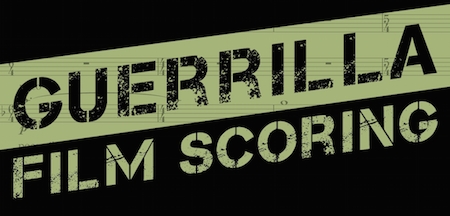
MA: Are the above areas covered in your upcoming book' Is there a mix of theory and practice in your approach to discussing them'
JB: Guerrilla Film Scoring covers all of this and more. It's a straightforward do-it-yourself manual which will help composers at all levels create the best-sounding scores quickly and cost effectively'without jeopardizing their art. It is written from a Hollywood insider's perspective, and it features 20 celebrity composers who share their practical advice throughout. It provides survival techniques to those who are working or hope to work in the music industry, and it fills the obvious gap between traditional music studies and a career in music. It is completely practical and immediately applicable to every working musician. There is also a feature length documentary by the same name.
We would just like to say a big thank you to Jeremy Borum for kindly agreeing to answer our questions with such depth and insight - be sure to check out the trailers for his upcoming documentary about Hollywood Film & TV scoring for more sage advice from the pros!


